
What Can You See In El Salvador on a Layover?
Disclaimer: El Salvador is on the U.S. Department of State Travel Warning list. The Department of State continues to warn U.S. citizens that crime and violence levels in El Salvador remain high, and U.S. citizens traveling to El Salvador should remain alert to their surroundings. Travel Warnings like these are issued when you should consider very carefully whether you should go to a country at all.
If you read my last post on traveling alone in El Salvador, you know that I decided to spend a seven-plus hour layover here touring the sights of San Salvador in a taxi.
Knowing that El Salvador is on the U.S. Department of State Warning list, I arranged a tour with a local company weeks ahead of time as a safety precaution and to help make maximum use of my time in the country. To my horror, despite reconfirming the day before, on the day of my arrival the tour company had “forgotten” about me, and I found myself alone at the airport and unsure of what to do.
I stood at the airport unsure of if there was a way to safely sight see. The airport is only a 20-minute drive from the beach and this option was recommended to me, but I had wanted to use my limited time to learn more about the country’s history and political situation. Public transportation was out of the question due to the safety risks, and without a guide it didn’t seem like there would be a way to safely see anything.
In midst of my upset and confusion, a blessing walked into my life in the form of José Corea, a trustworthy and official taxi driver with a wealth of knowledge about his country’s history and sights. For the price of $60 he became my unofficial tour guide for five hours, showing me the most important historical sights of San Salvador, the country’s capital, turning what was a very negative situation into a beautiful, educational and emotionally moving day.
So what can you see in El Salvador on a layover? It turns out, quite a lot. Here’s a look at the highlights of my day with José.
San Salvador, El Salvador’s Capital
El Salvador is a small country in the middle of Central America that is about the size of Massachusetts. The country has a population of 6.42 million. San Salvador, which is about a 45-minute drive from the airport, is home to more than one million people making it one of the most populated capital cities and largest financial centers in Central America. It is located in a volcano valley and prone to earthquakes.
It is interesting to note that 20% of the country’s population lives out of the country, making it the sixth largest immigration group in the United States. There are more than one million Salvadorans living in the United States, mostly in California, Texas and the Washington D.C. area. Many of these people came as refugees during the country’s brutal civil war between 1980 and 1990. Illegal immigration rates from El Salvador have also increased in the past decade as the country’s economic situation worsens or families wish to reunite but are unable to do so legally.
Mercado Nacional de Artesanias
My first stop with José was the Mercado Nacional de Artesanias, located on the outskirts of San Salvador. This national market features products from local artists, ranging from handspun textiles and paintings to postcards and ceramics. Apart from the airport, this is one of the best (and safest) places to purchase souvenirs.
The U.S. Dollar replaced the Colon as the official currency in 2001 in an effort to help the economy following the destruction of the civil war. This means you don’t have to worry about exchanging currency during a visit.
During my visit the market was buzzing with school groups. After reading so many warnings about travel in El Salvador, I was wary of being in the country at first. This was the perfect first stop for me because seeing these other tourists made me feel more safe and comfortable.
La UCA
La UCA, or Universidad Centroamerica, is a private Catholic university in San Salvador that has become one of the most prestigious universities in Central America.
El Salvador had a brutal civil war that lasted from 1980 until 1992. During these 12 years, 75,000 people were killed during the conflict and many families were torn apart. When war broke out, the country had been led by a military dictatorship since the 1930’s. Social inequality was widespread, with just 2% of the population owning 95% of the wealth.
The war was sparked by the assassination of Father Óscar Romero, a beloved priest and vocal advocate for social equality who was murdered on March 24, 1980 while celebrating mass.
After this assassination, FMLN, a guerrilla coalition was formed, backed by communist countries including the Soviet Union, with the intent of overthrowing the government. The United States invested $7 billion in the war in support of the military government. This averages out to $1.5 million dollars a day for 12 years.
During the war years La UCA was home to Jesuit scholars and intellectuals who served as thought leaders, speaking out against the Salvadoran military and researching war and poverty in the country.
Today La UCA has a powerful and graphic museum that documents the civil war. Unfortunately, as my visit fell on a Sunday, La UCA was closed, but José still drove me to see the outside of the university and told me about the history on the drive.
Plaza del Salvador del Mundo
From La UCA we drove to Plaza del Salvador del Mundo. This plaza is one of the most iconic attractions in the country. I’ve seen it in Costa Rica as it is featured prominently in commercials for a cell phone carrier that operates throughout Central America.
The Savior of the World plaza is famous for its tall statue of Jesus Christ standing on top a globe. It was constructed in 199 with the original intention of decorating the then President’s tomb. It has since become a symbol of El Salvador throughout the world.
José pulled his taxi over near the rotunda and walked with me to take my picture in front of the statue. The plaza was full of teenage skateboarders showing off their skills on the stairs and ramps.
No one paid any attention to me or my camera as my picture was taken here. I was surprised by this as I often get stared at while walking around San Jose, Costa Rica. I thought I would stick out even more in El Salvador, but no one paid me any unwanted attention during the day.
San Salvador Historical Center
José and I drove away from the plaza and toward the city’s historical center. As we got closer to sights of interest traffic became more congested and the streets filled with vendors.
Parque Simón Bolívar
Built in 1908, this park is known for its statue depicting Simón Bolívar atop a horse. Simón Bolívar was a Venezuelan military leader who led revolutions against the Spanish empire in the Americas. Parks and staues are dedicated to him throughout Central and South America.
The Tomb of Óscar Romero
José parked on a street filled with food vendors near the Catedral Metropolitana and pointed me in the direction of the entrance to the tomb of Óscar Romero.
“Is this where I enter to see Romero’s grave?” I asked a security official out front in Spanish. He looked me up and down for several seconds, a look of appall filling his face.
“Yes, but not in those,” he responded, pointing to my shorts.
I was only carrying a backpack with minimal items, but thankfully I had a pair of jeans back in the taxi. It was extremely hot in El Salvador and there was nowhere nearby to change so I pulled them over my shorts in the taxi. This was surely a ridiculous sight, but as I stared out the window into the crowded street, not a soul was staring back at me.
Properly attired I made my way back to the tomb’s entrance, this time with José by my side.
The tomb of Romero is located in the basement of the city’s main church. It was renovated five years ago to commemorate the 30th anniversary of the assassination. The tomb depicts Romero lying with a staff and surrounded by four figures representing the Holy Gospel. It is engraved with the Spanish phrase “To feel – or be – with the church,” which was his motto.
Catedral Metropolitana de El Salvador
The Metropolitan Cathedral is El Salvador’s largest church. El Salvador is primarily a Catholic country, and hundreds of people attend mass here daily. Many pilgrims also come to pay their respects to Romero.
The cathedral faces Plaza Barrios, a 16th century that marks the country’s political, economic and religious center. The National Palace and National Theater are also located here.
Plaza Libertad
Plaza Libertad pays tribute to an 1811 revolt in San Salvador against the Spanish government. Though independence did not occur until 1825, this revolution is known as the “first shout for the independence of Central America.” The central feature of this plaza is a monument with an angel on top.
We didn’t stop at this plaza, but José rolled down the window so I could take better pictures. We drove around the city with the windows open most of the time. At first I was really wary that my camera would be stolen but José reassured me it was safe to take photos. Indeed, no one so much as looked at my camera while I took photos both in and outside the car.
As we leave the city, driving is slow going as temporary stalls have been set up in many of the streets and people block the road as they shop for clothes, produce and household items.
Mirador Municipal
Enroute back to the airport we stopped at a mirador that overlooks the entire city of San Salvador. From this unique vantage point you can see the shape of the valley and the volcanoes that surround it. José pointed out all the buildings we had passed or stopped at in the downtown.
Pupusas in Olocuilta
My time in El Salvador would certainly not have been complete without trying some pupusas. We stopped in Olocuilta, a small town famous for its rice flour pupusas, just in time for dinner. There is nothing in Olocuilta besides a dozen pupuserias, or small restaurants that cook the national dish right in front of you.
Pupusas are thick handmade tortillas stuffed with cheese, beans or meat. José and I stopped in a pupuseria and tried a cheese and bean and cheese pupusa each.
The restaurant was full of families and as dusk took hold a live band began to play traditional music. Locals eat pupusas with their hands, but I unknowingly dug in with a fork and knife. This attracted the attention of a small boy who pointed me out to his family and laughed at me.

Walking around with semi-blond hair, changing jeans in a taxi and taking pictures with a fancy camera didn’t attract attention during my travels in El Salvador, but eating pupusas with a fork did!
Central America is known for low prices, and nowhere has this been more apparent for me than at the pupusaria in Olocuilta. Two large glasses of fresh-squeezed juice and four filling pupusas cost just $5.
Thank you to José
On the way back to the airport José practiced his English with me and told me more about his life. He served in the military during the civil war. Many of his family members are now living in the United States but he cannot obtain a visa to visit.
José has studied English for several years and said he loves to speak English with visitors in his taxi. Unfortunately, due to the violence and perceived danger in his country business is slow and he does not drive around many tourists. He said most of his clients are visiting for business.
I couldn’t have asked for a better guide during my time in El Salvador and I realize I was incredibly fortunate to have stumbled into such a kind, honest and knowledgeable person who did his best to keep me safe while allowing me to see El Salvador through his eyes. Thank you, José for keeping me safe, showing me so many sights and broadening my knowledge!
If you are planning on traveling to El Salvador please only do so after carefully considering the risks. José can be reached at joseantoniocoreas@outlook.com.
Sorry, the comment form is closed at this time.



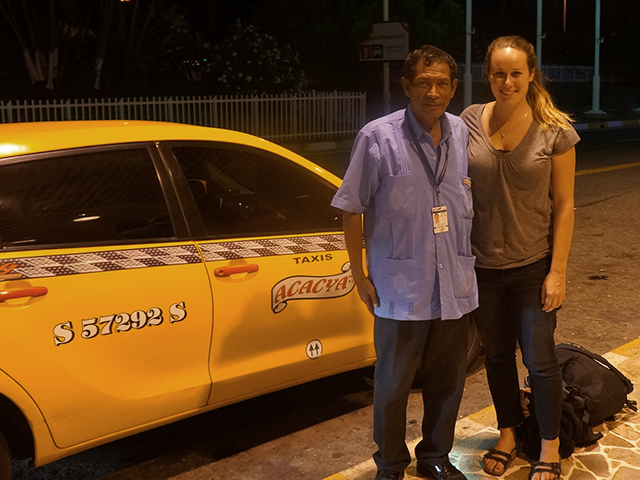
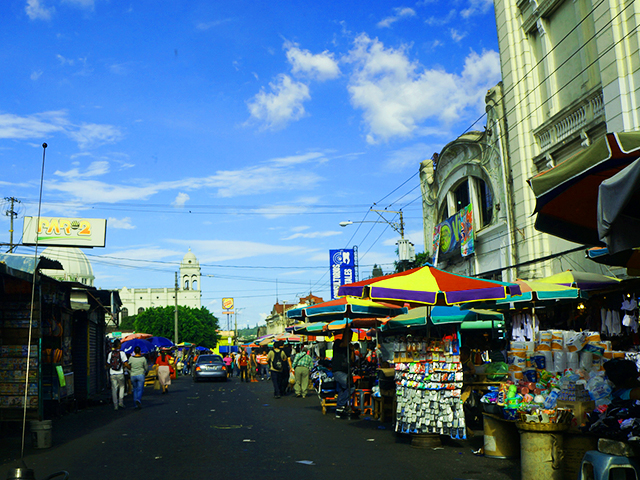
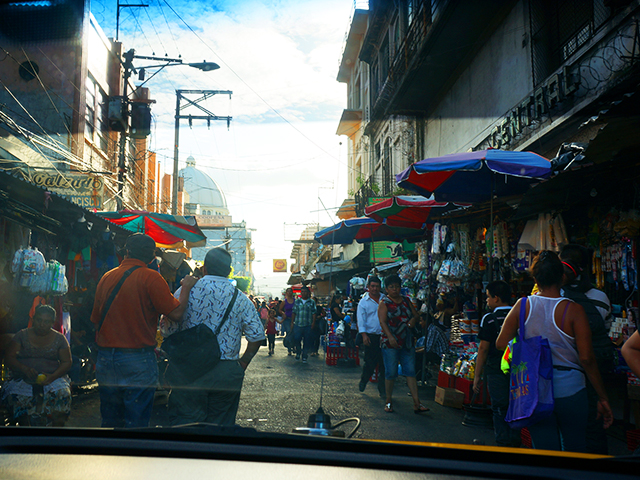
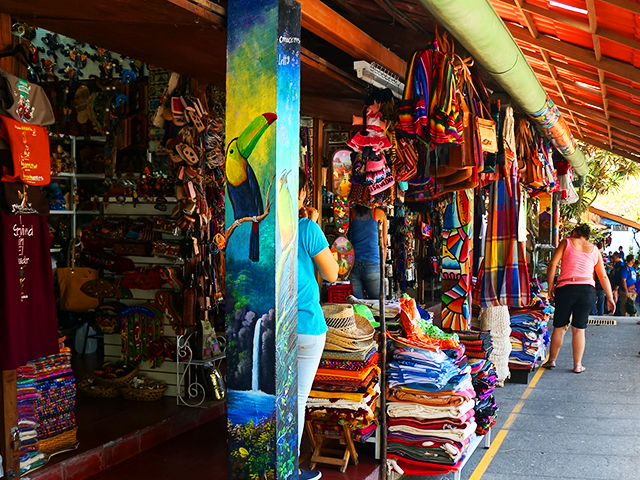


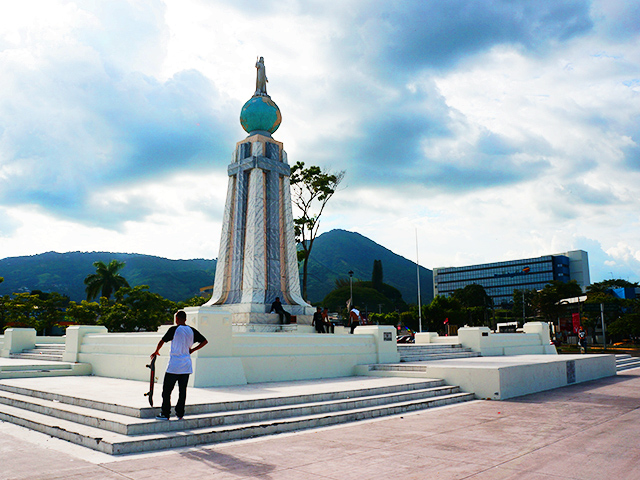


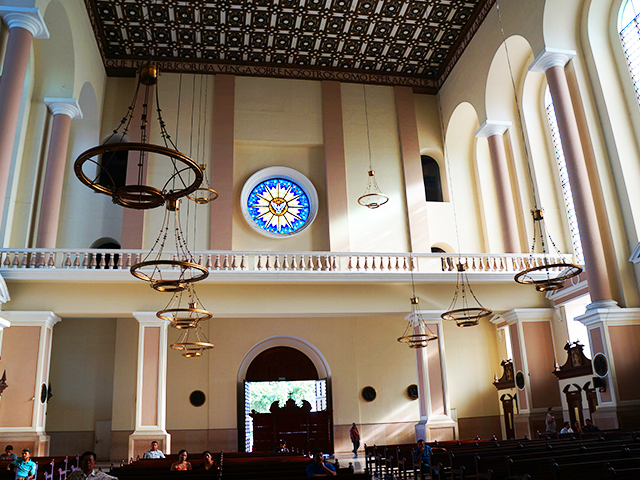

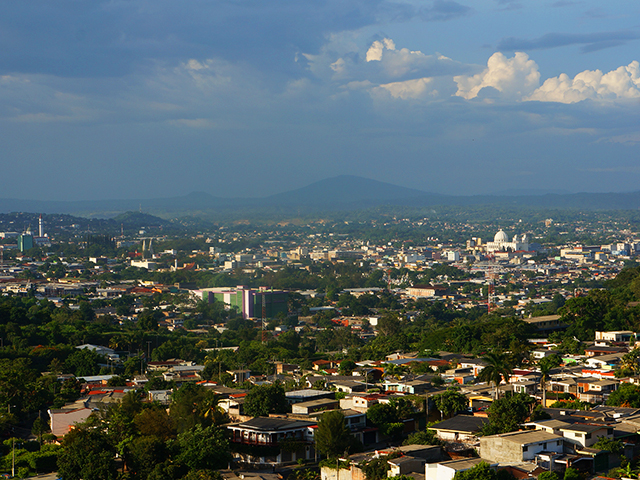


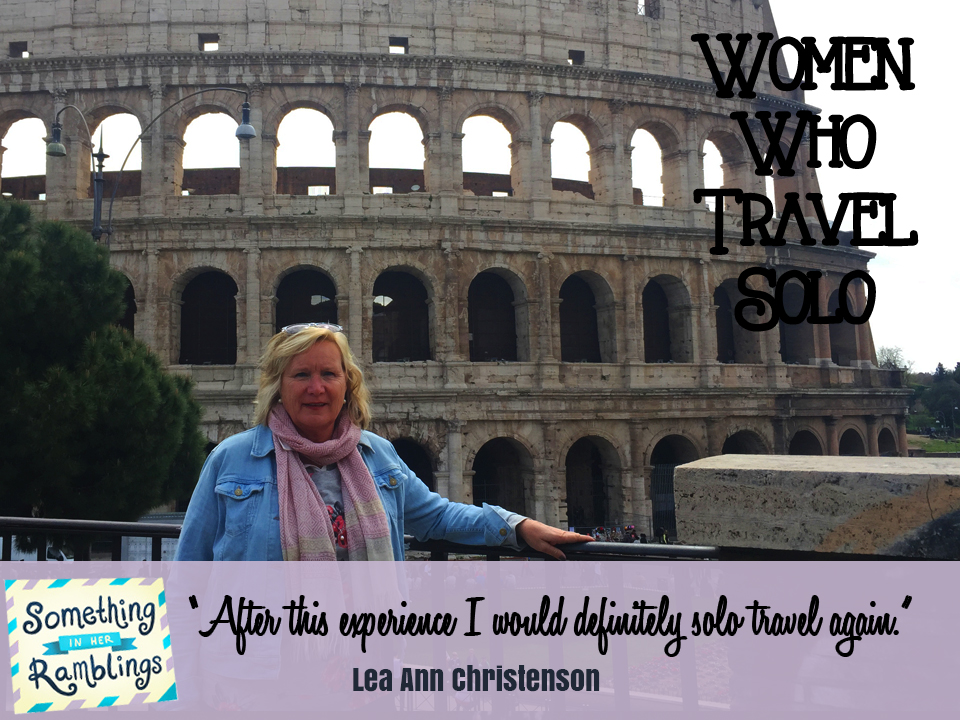

candy Curiel
Hi Lauren,
What a great posting! 🙂 on your 7 hour layover which airline did you fly on? Did you also have to pay the $27 airport tax when you returned to the airport?
thank you,
Candy Curiel
Lauren
Hi Candy!
I’m so glad you enjoyed this post. I flew with Avianca. I had to pay an airport tax before I could leave the airport. I forget the exact amount but I think it cost around $40-50. Then I had to pay the El Salvador tourist tax of $10 to get a visa. I did not pay any additional taxes once I returned to the airport.
Happy and safe travels!
Rachel
Thanks for this post! Im headed to Roatan shortly for a few weeks and I have a 10 hour lay-over in San Salvador on my way home. Would love to get more info from you if possible about the feasibility and safety of sight-seeing San Salvador as a solo female traveller.
Lauren
Sure! You can send me an email if you have more specific questions – lsalisbury24@yahoo.com
Mark
That sounds like an amazing stopover. I’m transiting SAL soon and gathering ideas of how to spend those layover hours.
Lauren
So glad this post was of help to you in your El Salvador layover planning!
Michelle
Hi Lauren, Great post! Quick question… Did you meet Jose inside the airport? Im thining of contacting Jose and Ive read of tour guides meeting at the gate and taking you through customs. Was this the case?
Thank You
Lauren
Hi Michelle! Jose did not take me through customs. I had arranged for a tour with someone else who failed to show up. I was quite flustered about the situation and so I asked an airport employee to help me – he directed me to Jose after I had cleared customs.
Customs is a very easy process – you simply follow the signs, wait in line and show your passport to get stamped (after you pay a $10 fee). However, after you clear customs and exit the airport there is a crowd of taxi drivers waiting at the door. This can be disorienting, so I’d recommend setting up a driver to meet you at the door so that you don’t have to stress about selecting one.
Jose is such a kind, gentle soul – I’d recommend his services in a heart beat!